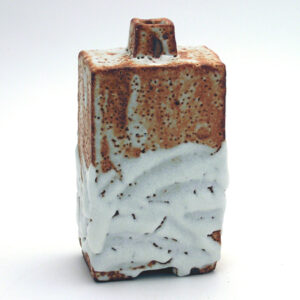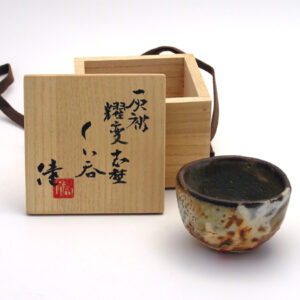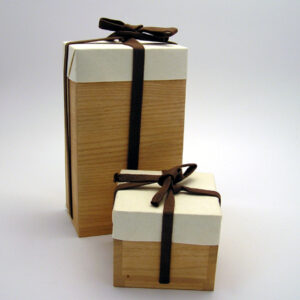Ken MATSUZAKI
View in collection
Internationally known as one of the leading potters in Japan, he graduated from the Fine Art Department of Tamagawa University in 1972 and was apprenticed to Tatsuzo Shimaoka for 5 years. Shimaoka was trained by Shoji Hamada, and is one of Japan's Living National Treasures. In 1977, Matsuzaki built his own kiln and established a workshop in Mashirko where he still lives. Initially he made significant pieces of work in the Mingei (1920s Japanese Arts and Crafts movement style), but favoured the expressiveness of ceramics from the Momoyama period (16th C). He has spent many years experimenting and developing his techniques in order to produce vessels that reflect the spirit of the traditional Japanese tea ceremony. He produces yohen-Shino (yohen means licked by the fire literally), based on traditional firing techniques burning 27000 bundles of pine and chestnut and 420 kg of charcoal. Originally Shino was Japan's first high-fired white-glazed pottery, its characteristics include a milky-white ash/feldspar glaze, iron-oxide brush markings, and small pinholes called "suana" (nest holes) which are similar to the orange peel appearance of salt-glazed pottery. Matsuzaki is also well-known for his reinterpretations of Yakishime (high-fired, unglazed, wood-fired ceramics) and Oribe ware (green-glazed, irregular forms). He performs 7-day firings twice yearly, working labouriosly around the clock. The UWA Ceramic Collection purchased two examples of Matsuzaki's work during the 2005 Aberystwyth International Ceramic Festival.
Details
- Dates: b.1950



